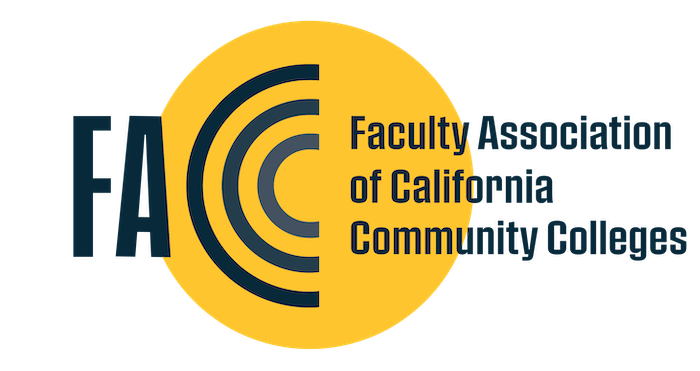Summer Blog Series: Visions of Throughput Part 2: Why Mass-Producing Equity Doesn’t Work
In May 2018, the California legislature, under pressure from Governor Brown and Chancellor Oakley, rushed a performance-based funding scheme into law that dedicates a portion of CCC funding to rewarding or punishing community colleges for their success, or failure, respectively, in meeting throughput targets. As one defender of such funding schemes put it, “The theory of action behind performance funding is simple: financial incentives shape behaviors.” Here the incentivized behavior is the one Chandler describes: raising throughput rates while at the same time lowering cost per unit completion. But if one declines to assume that factories and colleges are interchangeable, one immediately worries that faculty and staff are being incentivized to inflate grades and corrode educational standards. As Nicholas Hillman argues in “Why Performance-Based College Funding Doesn’t Work,” other perverse and unintended incentives may follow.
The extrinsic incentives of performance-based funding, for example, may erode the intrinsic motivations of teachers and students both. It’s difficult to see how there would not be all sorts of bad ethical and educational consequences to shaping the behavior of students so that they approach their education as something best got over with as quickly and cheaply as possible.
Hillman points out that the ideological drive to remake public sector agencies along the lines of efficient, highly rationalized private sector industries is not a new one; neoliberalism is a recent iteration of older laissez-faire ideology. In fact, the effort is old enough to have been thoroughly studied and studies have established its basic conceptual problem. Hillman summarizes, “Using outcomes as a management tool is difficult because public services are delivered through complex organizations where tasks are not routine and are inherently difficult to define and measure” (emphasis in original). Hillman cites the example of installing windshields in cars as a case where extrinsic financial incentives are likely to work—to succeed in raising throughput rates—and notes that this is because the task is routine, uniform and predictable, and under the sole control of the installer. In contrast, extrinsic funding has failed to work, for example, in fire departments, for the simple reason that none of these conditions apply to fires.
Each fire is unique, and so is each college student.
It is perhaps a testimony to the normative status of neoliberal ideology that the authors of the Vision, the faculty members of CAP, and the members of the California state Legislature, have lost sight of this basic human truth. What may explain this myopia, and what distinguishes neoliberalism from earlier versions of laissez-faire ideology, is neoliberalism’s dazzling promise that all sorts of desirable political and public goods can follow on from maximizing return on investment. Bain Capital, Mitt Romney’s former firm, advertises its “Double Impact Fund” not just as a way to achieve attractive returns on investment, but as an instrument of “meaningful, measurable social and environmental change.” Here Bain couples redress of climate change to return on investment, the same move that the authors of Redesigning America’s Community Colleges make in coupling redress of inequity to maximizing returns on taxpayer investment. And we find this same application of private sector means and values to the pursuit of public goods in CAP’s claim that the collective shared goal of community college faculty is to maximize throughput rates, and so achieve equity, by making the community college into what Jamie Merisotis, CEO of the Lumina Foundation, describes as a “more efficient engine for human capital development.”
Capital growth as a metaphor for human growth pervades the English and American literary traditions, as 40 years of steeping myself in those traditions has taught me well. In the age of neoliberalism, that complex metaphor has decayed into a simplistic and rigid ideological axiom. We are to believe that, “maximizing return on investment,” in an educational system whose core economic value is efficiency is the best means of achieving human educational growth. The authors and promoters of the Vision understand, presumably, that treating education literally as a capital investment means reconceptualizing the faculty as line workers in a factory, the measure of whose work is increased throughput; also presumably, they don’t necessarily want the faculty to take that lesson. We need to take the lesson.
I don’t claim to know whether the authors and promoters of the Vision themselves understand that their vision reconceptualizes students as industrial raw material to be processed as quickly and cheaply as possible into products for the job market. But this stingy and dehumanizing vision of education is not how California taxpayers understood the education of its majority white students in the heyday of the Master Plan. What was not too expensive for students then may be assumed to be too expensive for students now; on the basis of that assumption, political justice may now be offered up as a factory good produced with maximal efficiency, at minimal cost, and maximal return on investment—these are ways of saying that we continue to live under the dominion of neoliberal ideology.
The faculty need to call out that dominion and speak the plain truth. Justice does not and will not ever come in the form of a mass-produced factory product. Numerical equivalency in outcomes produced quickly and on the cheap is not the same thing as meaningful educational equity. The problem of equity is a hard political problem, not an easy engineering problem. The Chancellor may get his numerical equivalency in outcomes, but that will likely do as much to achieve genuine equity as Bain Capital’s flourishing “Double Impact Fund” will do to slow the steady cooking of global civilization. We need to do better. Cutting the ideological ties binding political equity to economic efficiency and opening a legitimate political debate over what real equity looks like, and how much it’s worth to us, would be a good start.
FACCC blog posts are written independently by FACCC members and encompass their experiences and recommendations.
FACCC neither condemns nor endorses the recommendations herein.
